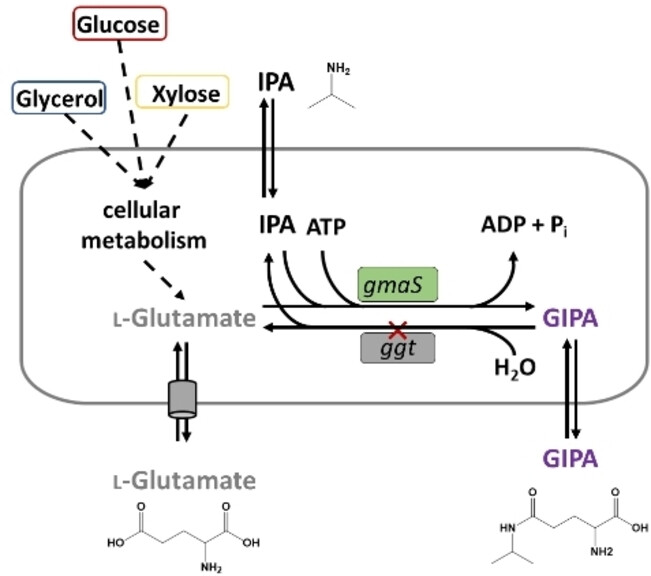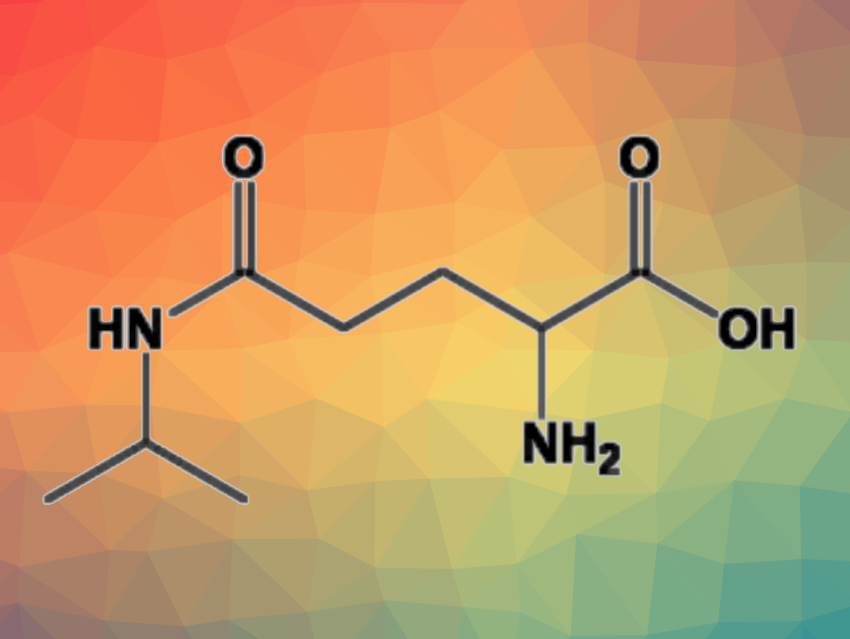The N-alkylation of amines can be used to improve the bioactivity of peptide drugs by increasing the solubility in water or the resistance to peptidases. Glutamylation is an example of such an N-functionalization, and efficient and sustainable methods for the production of of γ-glutamylated compounds are interesting research targets.
Volker F. Wendisch, Bielefeld University, Germany, and colleagues have developed a method for the fermentative production of γ-glutamyl-isopropylamide (GIPA) from isopropylamine (IPA) and L-glutamate.The team used an engineered Pseudomonas putida strain that expresses a γ-glutamylmethylamide synthetase (GMAS) gene from Methylorubrum extorquens. The GMAS enzyme can catalyze the γ-glutamylation of different amines. In addition, the engineered bacteria can produce the necessary L-glutamate intracellularly from glucose, glycerol, and xylose (pictured below).

To improve GIPA yields, the team deleted the ggt gene, which encodes the enzyme γ-glutamyltranspeptidase (GGT) that can degrade the product. The optimized bacterial strain was used in fed-batch bioreactor cultivations, yielding a GIPA titer of 11 g L–1. According to the researchers, this is the first fermentative production of GIPA.
- γ‐Glutamylation of Isopropylamine by Fermentation,
Leonie Benninghaus, Laura Zagami, Giulio Tassini, Florian Meyer, Volker F. Wendisch,
ChemBioChem 2023.
https://doi.org/10.1002/cbic.202300608


